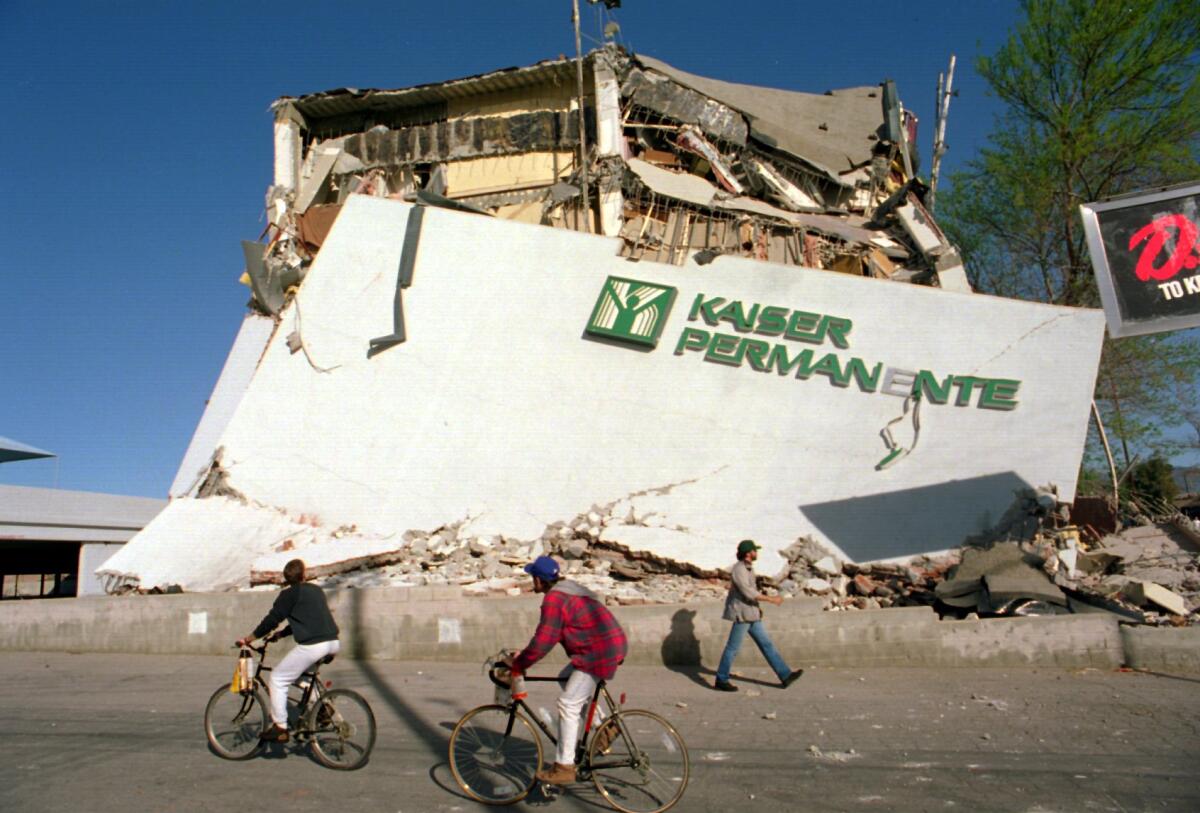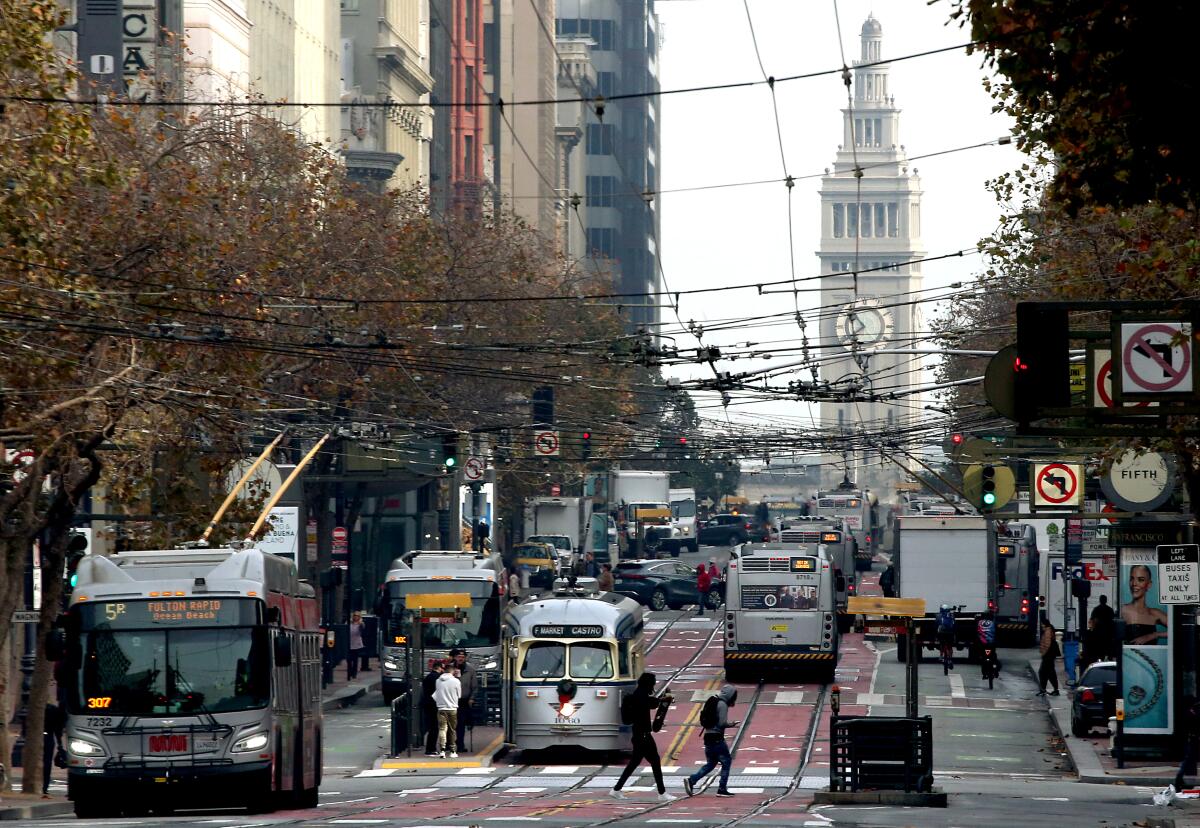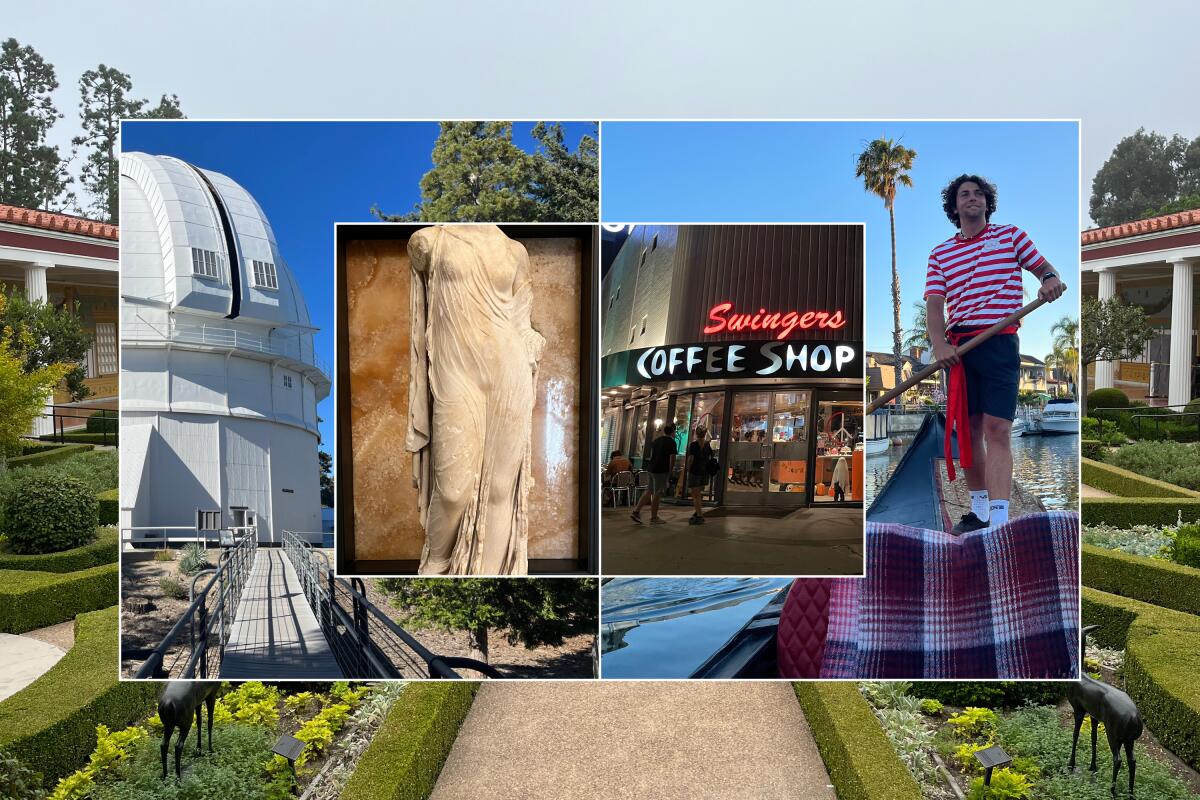30 years after Northridge, how ready are we for the next big quake?

- Share via
Good morning. It’s Wednesday, Jan. 17. Here’s what you need to know to start your day.
- 30 years after Northridge, how ready are we for the next big quake?
- Immigration debate deeply divides California Democrats
- 15 Angeleno-approved alternatives to L.A.’s usual tourist spots
- And here’s today’s e-newspaper
Sign up for Essential California
The most important California stories and recommendations in your inbox every morning.
You may occasionally receive promotional content from the Los Angeles Times.
30 years after Northridge, how ready are we for the next big quake?
One of my core early memories happened 30 years ago today. I was 5 years old, sleeping peacefully in the bottom bunk of my bed, when I was jolted awake by violent shaking.
As I sat there terrified and confused, my parents burst into my bedroom, each holding one of my toddler siblings, with similar looks of fear and confusion on their faces. We all hunkered in the bed until the shaking stopped. It felt like minutes, but the 1994 Northridge earthquake lasted about 20 seconds. We and our home in Ventura County were fine — nothing more than a few broken picture frames.
But a county over in the San Fernando Valley, that 20-or-so-second, 6.7 magnitude quake killed 60 people and injured thousands more. It crumpled freeways and destroyed or damaged an estimated 80,000 homes, stores and other structures. Trains derailed. Gas and water lines ruptured. Power transformers blew. Hundreds of fires broke out across the region. The powerful temblor cost an estimated $20 billion in damage and an additional $40 billion in economic losses, according to the California Department of Conservation.
The earthquake toppled many residents’ senses of security and control. It also changed how we build things, exposing the risks of brittle concrete structures and soft-story apartment buildings, many of which collapsed. Thirty years later, retrofitting work continues in L.A. and other SoCal cities.
But some cities “have ignored the seismic threat,” Times reporter Rong-Gong Lin II previously noted. “And that has created an uneven landscape that in the coming years will leave some cities significantly better prepared to withstand a big quake than others.”
The Northridge quake also spurred a scientific drive to better monitor and identify earthquakes — and alert affected communities before they start to feel the shaking, providing potentially lifesaving warnings.
Still, as my colleagues Karen Garcia and Jon Healey wrote this week, California’s early warning system is lacking compared with what’s in place in other countries:
“Japan’s warnings sound from cellphones, televisions and radios. Mexico’s sirens blare moments after a large temblor is detected, aiming to give residents time to seek safety before the shaking reaches them. In California, by contrast, the system relies on people signing up for alerts — and having a device on hand that can receive them.”
As scientists and officials make progress on these efforts, the big question remains: Will we have made enough progress by the time the next big earthquake hits?
Maybe today’s newsletter stirs your own memories of living through the Northridge earthquake, or maybe you weren’t living in SoCal — or living at all — when it struck. Either way, there are things we can all do to be a little more prepared. Here are a few questions to consider:
- Do you have earthquake kits and go-bags?
- Do you have a stash of canned food and bottled water?
- Do you have extra food and supplies for pets?
- Do you know your neighbors?
- Have you signed up for early warning alerts?
- Do you live or work in a building that’s at higher risk during a quake?
- Does your home need any retrofitting?
The Times has a handy guide (and a newsletter) on all things earthquake preparedness. Now’s as good a time as any to explore it and know how to prepare for the next big one. Because it’s not a matter of if, but a matter of when.
Today’s top stories

Politics
- Poll: Immigration debate deeply divides California Democrats.
- A fiery lawyer’s long-shot bid to put Donald Trump in the hot seat goes cold.
- Why old-fashioned TV is still the winning ticket for political ads.
- The plan for a utopian Bay Area city was shrouded in secrecy. Now its wealthy backers want it on the ballot.
Courts and crime
- Who struck two brothers in a crosswalk? A murder trial begins for an L.A. socialite.
- The Los Angeles County Board of Supervisors has approved a $1.75-million settlement with a Pico Rivera woman who accused sheriff’s deputies of performing two illegal cavity searches while looking for drugs.
- A lawsuit says sexual harassment by an emergency services official impeded wildfire recovery.
More big stories
- Would you take cash to leave a rent-controlled apartment? Data show it happens often in L.A.
- A small plane that crashed off Half Moon Bay carried 4 people. One body has been recovered, officials say.
- More rain is expected for Southern California this week. How much could we get?
- SFO’s international terminal to be renamed after the late Sen. Dianne Feinstein.
Get unlimited access to the Los Angeles Times. Subscribe here.
Commentary and opinions
- Jonah Goldberg: Biden is late but right to strike against Yemen’s Houthis.
- Editorial: Nanoplastics are dangerous — and they are in your “pure” bottled water.
- Opinion: I believe in tenants’ rights. But L.A. is pushing out small landlords like me.
- Column: How will the Latino vote go in 2024?
- Lorraine Ali: Millions of Angelenos haven’t lived through a big quake. I have, and this is what it’s like.
- Bill Shaikin: The Dodgers and everyone else: A not-so-Golden State for MLB.
- Opinion: Thirty years after the Northridge earthquake, I still think about a hero I met that day.
Today’s great reads
All is lost in San Francisco? City loyalists take issue with naysayers. Data may back them up. Bucking the “doom loop” narrative, many tech entrepreneurs say San Francisco is still the “it city” for innovation and opportunity — especially with the rise of AI.
Other great reads
- The Coachella lineup is here, and the main acts — Lana Del Rey, Tyler, the Creator and Doja Cat, plus No Doubt — comprise the most L.A.-centric in festival history.
- Why Gael García Bernal is encouraging Mexican Americans in the film industry to behave badly.
- How Asian is your Costco? Help us find SoCal’s most “Asian Costco” for Lunar New Year.
- People don’t know how to behave in the office anymore, bosses say. The solution? Charm school.
How can we make this newsletter more useful? Send comments to essentialcalifornia@latimes.com.
For your downtime
Going out
- 🥾 15 Angeleno-approved alternatives to L.A.’s usual tourist spots.
- 🏄🏽 5 epic outdoor adventures that will make you feel powerful in 2024.
- 💆🏽 10 under-the-radar spas to rejuvenate in hot water in and around L.A.
Staying in
- 🧂 Get your pantry ready for the new year by updating herbs, spices and condiments.
- 📕 How journalist Michele Norris exposed our ‘Hidden Conversations’ about race in her new book.
- 🧑🍳 Here’s a recipe for braised minced pork belly.
- ✏️ Get our free daily crossword puzzle, sudoku, word search and arcade games.
And finally ... a great photo
Show us your favorite place in California! Send us photos you have taken of spots in California that are special — natural or human-made — and tell us why they’re important to you.

Today’s great photo is from Times photographer Myung J. Chun at the 75th Primetime Emmy Awards. Here’s more of the best fashion from the Emmys red carpet.
Have a great day, from the Essential California team
Ryan Fonseca, reporter
Elvia Limón, multiplatform editor
Kevinisha Walker, multiplatform editor
Laura Blasey, assistant editor
Check our top stories, topics and the latest articles on latimes.com.
Sign up for Essential California
The most important California stories and recommendations in your inbox every morning.
You may occasionally receive promotional content from the Los Angeles Times.









